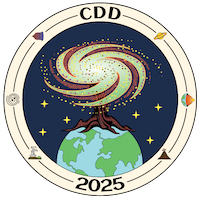Orateur
Description
The geomagnetic field observed at the Earth's surface or at satellite altitudes is the result of a combination of signals generated by both internal and external sources. Internal sources include magnetic fields produced by the geodynamo in the Earth's outer core, as well as fields generated by magnetized rocks in the lithosphere and induced magnetic fields within the lithosphere and mantle. External sources of the magnetic field are located in the ionosphere and magnetosphere, and are driven by electric currents. In this presentation, we outline an approach to extract and model the magnetospheric field contributions using magnetic observatory vector measurements. These data have a high temporal resolution and are particularly well-suited to characterize magnetospheric signals in space over a wide range of time scales. The goal of this work is to reliably characterize these signals from 1996 to 2024, during geomagnetically quiet times, spatially up to spherical harmonic degree 6, with a temporal resolution in time of one hour. For this, we apply an approach that uses a combination of the Kalman filter and correlation-based techniques. This method offers a more robust statistical framework, providing more accurate error estimates for the model parameters. We evaluate the model's key features using standard criteria, such as fit to the data, posteriori model distribution, shapes of power spectra over time, spatiotemporal geographical variations and correlations with geomagnetic indices like the Disturbed Storm Time (Dst) and the magnetospheric ring current (RC) indices. A Fourier analysis of the models shows the expected semi-annual, monthly, and daily harmonics, but also evidences of tidal signals.
| Speaker information | PhD 2nd year |
|---|

